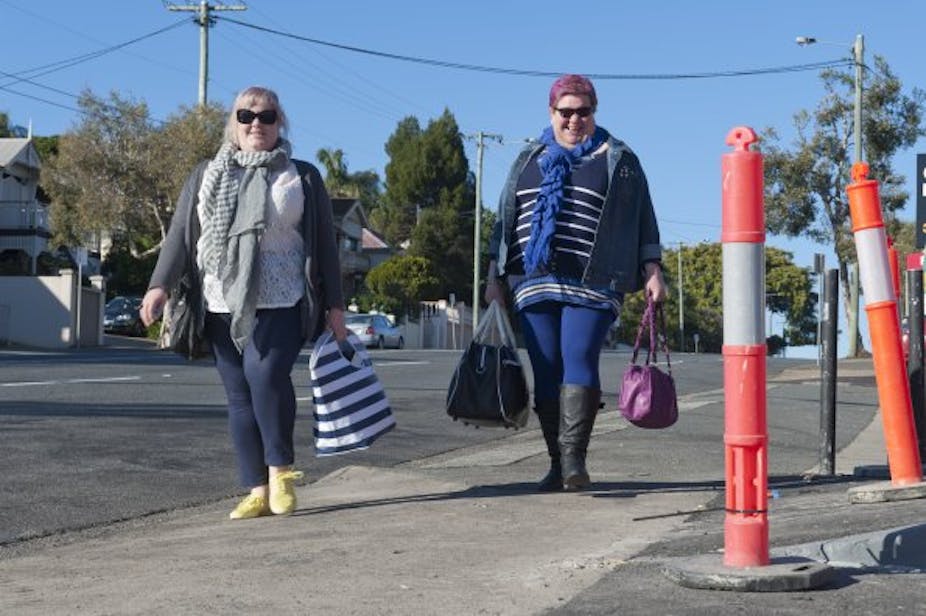In her recent book tour promoting Hunger, author and academic Roxane Gay has been unflinchingly honest with audiences about the impacts of having a fat body, and has drawn the public’s attention to a long-running conversation about fatphobia and fat activism.
Fat women experience fat stigma through many avenues in their lives, and perhaps the most dangerous is the impact fat stigma has on their experiences with health care. Fat women delay engaging with health care, and are often faced with anti-fat attitudes by their providers.
The internet is awash with stories from fat people about their experiences of receiving substandard care from those in the healthcare profession.
Fat stigma and shaming is widespread
Discrimination against fat people, almost across the world, is legal. Physical size is not a protected class, whereas gender, disability, or religious affiliation often are in Western cultures.
People can – and are – fired for being fat, lose promotions for being fat, and denied housing for being fat.
The structural discrimination against fat people makes it particularly difficult for them to navigate the world and live full lives. This, in combination with fat stigma perpetuated through micro-aggressions, prejudice, and everyday sizeism, means fat people face an array of social, cultural, economic and political challenges.
The facts of fat stigma
Fat stigma is a powerful factor in the physical and mental health of fat individuals.
Independent of body mass index (BMI), fat stigma increases blood pressure, inflammation, and levels of cortisol. It also decreases executive function. Fat stigma is strongly correlated to higher circulating levels of C-reactive protein.
There are also negative psychological effects. Experiencing fat stigma lowers body image satisfaction, self-esteem and self-efficacy, and feelings of belonging. It contributes to depression and suicidal ideation in young people. Fat stigma can also demotivate fat people to engage in exercise, especially in public.
In short, fat stigma is a substantial social determinant to health. Yet many public health campaigns promote fat stigma as a tool in fighting the “war on obesity”.
The failure of anti-obesity campaigns and their promotion of fat-shaming
There are many examples of public health campaigns using fat stigma as a method of combating obesity.
In Australia, the Grabbable Gut campaign by LiveLighter features both print and TV ads that focus on grabbable guts and the visceral fat lurking inside them. It is supported by the Heart Foundation, the Cancer Council, and Western Australian Department of Health.
The tagline “Had a grabbable gutful?” encourages viewers to grab their own guts and consider what dangers may be lurking beneath. It is intended to disgust the viewer, and shock them.
According to its website, LiveLighter’s goal is to:
… encourage Australian adults to lead healthier lifestyles - to make changes to what they eat and drink, and to be more active.
However, research shows that promoting fat stigma produces the opposite behaviours.
These campaigns embrace fat stigma as a tool to advance their anti-fat agenda. Yet they lack evidence that fat-shaming and discrimination will effectively combat obesity. In fact, population BMIs are not decreasing, even after decades of fat-shaming campaigns. Despite this, organisations continue to rely on fat stigma approaches.
Acknowledging the impacts of fat stigma in policy and public health campaigns
Health officials, and public health campaigns, should acknowledge the role that fat stigma plays in the health and well-being of fat individuals, and reject the use of stigma engagement in their campaigns.
Combating this should be a priority for improving overall population health. Campaigns should be run to educate the general public, as well as health-care providers, on the nature of fat stigma and the various harms it causes.
Unfortunately, no such public health campaigns for fat stigma exist. While evidence demonstrates the effectiveness of improving the health of fat people independent of weight loss, public health campaigns seem unable to separate themselves from framing fat as the enemy.
A starting point for Australia is to tackle gaps in our legislation to ensure that physical size is a protected category from discrimination. Policy and practice should work to reduce fat stigma, rather than reducing the sizes of people’s bodies.
In the interim, stories from fat people about fatness should be central to the ways that we understand fatness. Fat people often experience what writer Lindy West calls a “disorienting limbo between being too visible and invisible”; they exist in the world both as hyper-visible bodies publicly judged, assessed, and rejected, and as invisible figures who are rarely allowed a voice. As Roxane Gay pointed out:
Do you see how much I had to write to get you to even notice me? And that’s because I’m fat. I know that. That’s how much work I’ve had to put in to get a fraction of the attention that a conventionally attractive thin person is going to get.
While promoting the voices of fat people, we must also recognise that fat people are not a homogeneous group. Fat people of colour have different experiences than fat people with white privilege. Fat men (both cisgender and transgender) experience their fatness, and subsequent fat stigma and discrimination, differently from fat women. Fat people with able bodies have different experiences from fat people with disabilities.
Regardless of what else, and who else, they may be, fat people of all sizes deserve the same rights and dignity as non-fat people. Shifting how public health approaches fatness, and providing legal protection for physical size under the law, are necessary to remove the structural barriers to fat people living full and meaningful lives.

